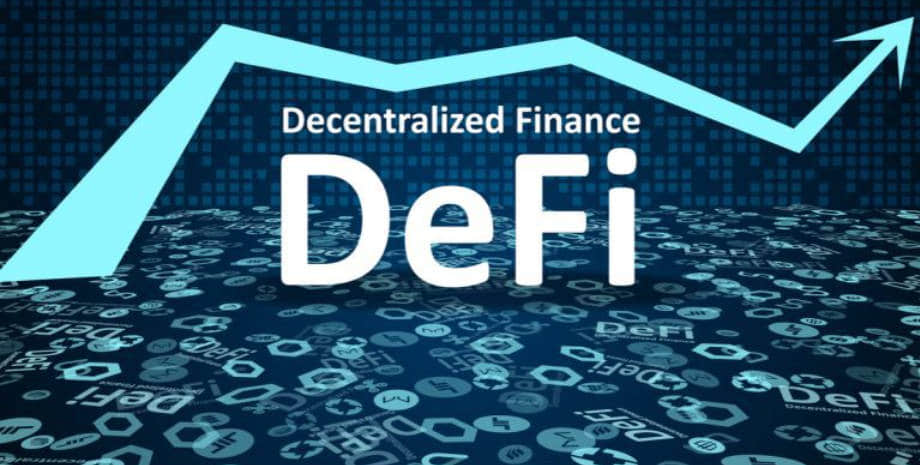Four Valuation Drivers of Cryptocurrency Projects and the Dragon Ball Model
Uncovering the Four Key Factors Affecting the Value of Cryptocurrency Projects An In-Depth Look at the Dragon Ball ModelValuation/market capitalization support for a crypto project, in addition to being influenced by funding and interest rate cycles on the macro level, is primarily driven by expectations supported by non-fundamental factors, as most token projects in this industry lack financial fundamentals. From my observations of over a year in this space, I have attempted to summarize the following four driving forces:
Benchmark:
The benchmark logic is quite rough. It serves as the laziest mental harbor for first-tier investment institutions when analyzing early-stage projects without using fundamental or cash flow models. Of course, this assumption is based on the belief that others would also analyze in this way, constructing a value analysis framework based on floating consensus. If BTC is a trillion-dollar asset, then ETH, which is further developed, is a hundred-billion-dollar asset, and ETH layer2 or ETH challenger is a ten-billion-dollar asset, and so on. The so-called benchmark is about comparing in terms of magnitude, but weaker by one order of magnitude, “as long as everyone feels that such a price is not excessive.” This also explains why Layer2 and Move chains are valued in the tens of billions, but the benchmark is not fixed. Those in power must always be strategic. If a stronger alternative emerges, the older generation will gradually fade away. Recently, the market for Ordi, apart from the factor of Binance joining the listing, is primarily driven by the narrative of a secondary leading project in the BTC ecosystem. Similarly, this is why most assets will fluctuate with the price of BTC during market changes.
The valuation/market capitalization of benchmark projects depends on the scale of benchmark assets, the number of similar competitors in the field (diversion of investor attention), and the historical position of being the first to propose such benchmark narratives. To maintain the valuation of such projects, it is necessary to have “credible coordination” within the project and gradually rely on the second, third, and fourth points mentioned above. Otherwise, such obvious strategies will undoubtedly lead to competition from many others, diluting each other’s attention.
- Don’t Get Rekt! dYdX Ups Margin Requirements and Puts the Kibosh on Highly Profitable Trades
- dYdX DEX and YFI Token Hit by $9 Million Targeted Attack – Unmasking the Hackers!
- DYdX founder exposes orchestrated assault leading to $9M insurance claim
Status:
The logic of status is also quite rough, as it is based on the premise that “this project has a very strong industry position.” For example, Uniswap and Chainlink in DeFi have become leading, dominant players that are deemed indispensable. While the original demand for their tokens (governance and staking) can generate some demand, it is clearly not enough to support profitable selling. Therefore, the current balance is also based on holders’ recognition of their industry status. However, whether this status can be strengthened is another matter, as it will also affect expectations and subsequently impact supply, demand, and prices. For example, Chainlink has a relatively well-structured token model with some value capture, but market recognition still comes from the demand for Chainlink services from the majority of DeFi projects and even future trading platforms.
Valuation of useful class projects can also have benchmarks, based on the size of their industry (such as DeFi) and the leading projects in that industry to determine their valuation scale. For example, the importance of Chainlink to DeFi should at least give it a price level of a unicorn or higher. However, if the token does not have a long-term way to capture value, there will still be significant selling pressure before all tokens are unlocked.
Ponzi / Speculation:
The mechanism of speculation is very clear, which is that the token mechanism of this project creates an expectation called “buy first, sell to later buyers”. Because everyone thinks they have a higher probability of being ahead of others and always believe that they have bought before the tipping point. In fact, many ponzi schemes in this field are open and visible to everyone, not deception or internal accounting. The difference in expectations determines who will benefit at the expense of others, but the biggest beneficiaries will inevitably be the unscrupulous dealers and the project team who have not been held accountable.
In the past two years, typical examples are Axie/Stepn/Luna. The characteristics of such projects are extreme ups and downs, and they all have varying degrees of short lifespans. Projects that skyrocketed and then plummeted often still maintain some value, although many investors inevitably end up losing everything.
The design of speculative projects tests one’s level of expertise, as does marketing and being able to exit at the right time. As the market and investors evolve, the challenges for operators in this field are increasing. Changes in interest rates also reduce the attractiveness for investors as it becomes less effective.
In fact, Ponzi schemes are everywhere in life, but the degree varies. As long as the existing and future capabilities are not enough to fully repay, Ponzi schemes essentially exploit those with a gambler’s mindset.
The valuation of such projects is difficult to estimate and usually requires analysis using 1/2/3 valuation anchors.
Fomo / Desires:
The biggest desire in this industry also stems from FOMO, which is the hope that this industry will be adopted and accepted on a mass scale like the internet. For example, there are always many desires for innovation in the application side of the industry, such as social media and gaming. These desires are typically ambitious, yet have the potential to be realized. They are hopes that can be manifested in some way. Previous games and social media platforms belonged to this category, such as Axie/Stepn/Cyber, and now AI projects. However, desire-based projects must be the first ones to gain enough attention because everyone is on a starting line that has not been reached yet.
Wishes are beautiful, but hopes are even more beautiful. Hope comes from the feeling of constantly getting closer to realizing our wishes. The creation of this feeling depends on the criteria we measure it by. Is it daily active users (DAU)? Is it the number of followers? Is it being covered by mainstream media? It could be any or all of these.
Our fund and most funds that understand web3 as the internet are different. Our perception of mass adoption is from an asset perspective. If cryptocurrencies make up 5% of the world’s liquid assets, that would be at least $200 trillion, which is a minimum 20x increase from the current market cap. However, the driving forces behind asset allocation and internet development are not aligned, so we see that it is difficult for any crypto project that wants to leverage the driving force of the internet to become mainstream assets. I’ve discussed this in other tweets.
Only top projects that meet this single criterion currently have Fully Diluted Valuations (FDV) between $100 million and $3 billion.
These four driving forces mentioned above are not contradictory to each other; instead, they complement each other and make the overall case stronger. You can think of numerous examples in your daily life that support this argument.
In addition to these four driving forces, there are also more fundamental or basic driving forces:
Useful: similar to needing ETH as daily transaction fees or requiring a specific NFT to obtain certain rights
Revenue: similar to GMT’s fee-sharing model or staking returns based on fees for certain DeFi tokens
Deflation: similar to the deflationary expectations Binance created for BNB in the past
These three are similar to off-chain tickets and stocks and are relatively easier to understand. However, numbers 5 and 6 are difficult to support high market values, and 7 poses regulatory challenges and requires the project to have strong capabilities and be recognized by investors, which are attributes that place extremely high demands on the project itself.
Collecting these “seven dragon balls” inevitably leads to a pearl on the crown. I also welcome everyone to analyze which categories the current mainstream projects belong to in the comment section. In the world of Dragon Ball, the “effectiveness” varies in duration, and the “power” varies in strength. Most of them are highly sensitive to liquidity and are considered by value investors to lack fundamentals. Let’s analyze together.
Afterword:
Every time I ride a high-speed train, I think of an analogy. ETH’s design is similar. ETH itself is (1) fuel, (2) ticket, and (3) stock. This three-in-one design initially creates FOMO, but in the medium-term, it will encounter the problem of being unable to accelerate even with more fuel. In the long run, using stocks as tickets and fuel becomes too expensive. That’s why we have concepts like “coal to electricity” and “Layer 2 networks” and actions like separating railway operators or listing the Beijing-Shanghai line separately. It’s actually quite similar to telecommunications companies with their “electricity tariff + service charge + stock” three-in-one feeling.
So it is often the case that the road is laid first, fuel is burned next, and then tickets are sold in that order. But, as we all know, there are too many tracks without trains in this industry, or too many trains running empty. So, everyone wants to work together and fill the carriages with chickens, ducks, cows, and sheep. But for this type of train network that relies on technology and game strategies to establish consensus, the main purpose is to transport “funds”. Because only by transporting funds can it be the most efficient and suitable for this type of network. This is also why the web3 driven by the mindset of Internet applications has actually been shattered long ago. Because if we use a sledgehammer to kill a chicken, then the chicken is too expensive and cannot be sold.
So, going back to the point, the essence of this industry lies in using a token model driven by multiple pricing mechanisms to raise funds for public infrastructure. And this public infrastructure starts with the circulation of the most scalable financial resources. The by-product is what? It is the invention of a pricing and circulation model for public goods. So, instead of constantly thinking about the commercial world and the Internet model, why not think more about which public goods in today’s world have significant social value but are not priced? Although they are valuable, their circulation efficiency is extremely low, and there is a lot of friction. This may be the real opportunity.
Later on, I will try to write another article describing where the opportunities lie for these public goods.
We will continue to update Blocking; if you have any questions or suggestions, please contact us!
Was this article helpful?
93 out of 132 found this helpful
Related articles
- Why the YFI Token Drop Is No Ordinary Roller Coaster Ride
- From BTC DeFi to BTC Eco Reflections on the BTC ecosystem
- Finance Redefined: DeFi Insights That Will Make You Laugh and Invest
- Sushi Brings the Heat to DeFi Introducing Native Bitcoin on ZetaChain! 🍣💥
- LianGuaiWeb3.0 Daily | Ordinals total transaction volume exceeds $27 million
- BorroeFinance – The AI Crypto That Will Turn Your Investments into a Cash Flow Tsunami
- Pyth Airdrop From Ethereum to Solana and Aptos, Get Ready to Reap the Rewards of the Exciting New Platform Launch – How to Check if You’re in for the Cryptocurrency Bonanza!





